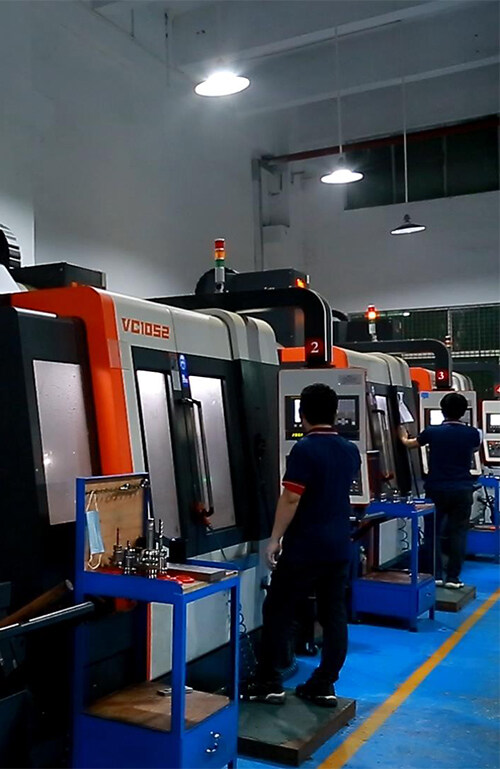Email format error
Email cannot be empty
Email already exists
6-20 characters(letters plus numbers only)
The password is inconsistent
Email format error
Email cannot be empty
Email does not exist
6-20 characters(letters plus numbers only)
The password is inconsistent


Technological Capabilities of Cheap 3D Printing Services in China
I. Overview of 3D Printing Technologies
The 3D printing industry has witnessed remarkable growth in recent years, with China emerging as a significant player in the global market. Known for its cost-effective manufacturing solutions, China offers a diverse range of 3D printing technologies that cater to various industrial needs. From rapid prototyping to full-scale production, Chinese 3D printing services are at the forefront of technological innovation, providing high-quality, affordable solutions to businesses worldwide.
II. Range of 3D Printing Technologies Available
Fused Deposition Modeling (FDM)
Fused Deposition Modeling (FDM) is one of the most widely used 3D printing technologies, particularly for its affordability and versatility. FDM printers work by extruding melted plastic filament layer by layer to build up the desired object. This method is highly accessible, making it a popular choice among hobbyists, small businesses, and large manufacturers alike.
In China, FDM technology is prevalent due to its cost-effectiveness. Chinese manufacturers have developed advanced FDM printers that offer precise control over print quality and speed. The technology’s simplicity and the availability of a wide range of filament materials, such as PLA (Polylactic Acid) and ABS (Acrylonitrile Butadiene Styrene), make it a go-to choice for many applications. These materials are not only economical but also provide adequate mechanical properties for various uses, from prototypes to functional parts.
Stereolithography (SLA)
Stereolithography (SLA) is another prominent 3D printing technology known for its high-resolution capabilities. SLA printers use a laser to cure liquid resin into solid layers, creating highly detailed and accurate prints. This technology is particularly valued in industries that require intricate details and smooth finishes, such as jewelry, dental, and medical fields.
Chinese 3D printing services offer advanced SLA printers that leverage state-of-the-art laser technology and high-quality resins. The precision of SLA makes it ideal for producing complex geometries and fine details, which is crucial for applications like dental models and intricate prototypes. The growing availability of SLA printers in China reflects the country’s commitment to providing high-precision solutions at competitive prices.
Selective Laser Sintering (SLS)
Selective Laser Sintering (SLS) is a powerful 3D printing technology that uses a laser to sinter powdered material, typically nylon or other thermoplastics, into solid structures. SLS is known for its ability to produce functional parts with high strength and durability, making it suitable for end-use applications and complex assemblies.
In China, SLS technology is increasingly popular due to its capability to handle a wide range of materials and its suitability for producing functional parts in low to medium volumes. Chinese 3D printing services offer SLS printing that caters to industries such as automotive, aerospace, and consumer goods. The technology’s ability to produce strong, durable parts with complex geometries is a significant advantage for companies looking to create functional prototypes or production parts without the need for expensive tooling.
Other 3D Printing Technologies
Beyond FDM, SLA, and SLS, there are several other 3D printing technologies that Chinese manufacturers offer. These include:
- Digital Light Processing (DLP): Similar to SLA, DLP uses a digital light projector to cure resin, offering fast and high-resolution prints.
- MultiJet Fusion (MJF): MJF is a technology developed by HP that uses inkjet arrays to apply fusing agents to powder, followed by a heating process to create durable parts.
- Electron Beam Melting (EBM): EBM is a powder-bed fusion technology that uses an electron beam to melt metal powders, producing high-strength metal parts.
These technologies cater to niche applications and specific industry needs, further enhancing the versatility of China’s 3D printing services.

III. Types of Materials Used in Chinese 3D Printing Services
Commonly Used Materials
Chinese 3D printing services utilize a diverse range of materials to meet various printing needs. The most commonly used materials include:
- PLA (Polylactic Acid): PLA is a biodegradable plastic made from renewable resources such as corn starch. It is easy to print with, making it popular for FDM applications. PLA offers a good balance between ease of use and print quality, making it suitable for prototypes and educational projects.
- ABS (Acrylonitrile Butadiene Styrene): ABS is a durable and impact-resistant plastic used in FDM printing. It is known for its strength and heat resistance, making it suitable for functional prototypes and end-use parts.
- Photopolymer Resins: SLA and DLP printers use photopolymer resins, which cure when exposed to light. These resins come in various formulations, including standard, flexible, and high-temperature resins, allowing for a wide range of applications.
- Nylon: Nylon is a versatile material used in SLS printing. It is known for its strength, flexibility, and resistance to wear and tear. Nylon is ideal for producing durable and functional parts.
Specialty Materials
In addition to common materials, Chinese 3D printing services also offer specialty materials for more specific applications:
- Metal and Composite Materials: For industrial applications, metal 3D printing using materials such as titanium, aluminum, and stainless steel is available. Composites that combine plastics with carbon fiber or glass fibers are also used to enhance strength and performance.
- Flexible and Rubber-like Materials: Flexible filaments and rubber-like materials are used to create parts that require elasticity and flexibility, such as seals, gaskets, and wearables.
- High-Temperature and Flame-Retardant Materials: These materials are used in applications where parts are exposed to high temperatures or need to meet fire safety standards.
Innovation in Material Science
China’s 3D printing industry is at the forefront of material innovation. Companies are continuously developing new materials that push the boundaries of what is possible in 3D printing. Research and development efforts focus on improving material properties, expanding the range of printable materials, and enhancing the performance of 3D-printed parts. Collaborations between Chinese 3D printing companies and research institutions drive advancements in material science, contributing to the industry’s growth and evolution.
IV. Innovation and Technological Advancements
Advancements in 3D Printing Technologies
China’s 3D printing industry is characterized by rapid technological advancements. Key innovations include:
- Improved Printing Speed and Accuracy: Advances in printer technology have led to faster printing speeds and higher accuracy, reducing production times and improving the quality of printed parts.
- Multi-Material and Multi-Color Printing: Modern 3D printers in China can print with multiple materials and colors simultaneously, allowing for the creation of complex and aesthetically appealing parts in a single print job.
- Integration of AI and Machine Learning: AI and machine learning technologies are being integrated into 3D printing processes to optimize print settings, monitor print quality, and predict maintenance needs. This enhances the efficiency and reliability of 3D printing services.
Innovative Applications
Chinese 3D printing services are not limited to traditional applications. Innovations in the industry include:
- Healthcare: 3D printing is transforming healthcare by enabling the production of custom prosthetics, dental implants, and surgical guides. Chinese companies are at the forefront of developing advanced medical devices and personalized healthcare solutions.
- Automotive and Aerospace: The automotive and aerospace industries benefit from 3D printing’s ability to produce lightweight, high-strength parts. Chinese manufacturers are working on advanced components and assemblies that meet the stringent requirements of these industries.
- Architectural and Construction: 3D printing is revolutionizing architecture and construction with the development of large-scale 3D-printed buildings and structures. Chinese companies are exploring innovative approaches to construction, including 3D-printed housing and infrastructure.
Research and Development
China’s commitment to advancing 3D printing technology is evident in its robust research and development ecosystem. Leading research institutions, universities, and private companies are engaged in cutting-edge research to push the boundaries of 3D printing. Government initiatives and funding support the growth of the industry, fostering innovation and collaboration between academia and industry.
V. Conclusion
The technological capabilities of cheap 3D printing services in China are vast and continually evolving. From a diverse range of 3D printing technologies to innovative materials and advancements in technology, China’s 3D printing industry offers high-quality, cost-effective solutions for various applications. The country’s focus on research and development ensures that it remains at the forefront of technological progress, providing valuable services to businesses and industries worldwide.
As the industry continues to grow, the potential for new applications and innovations is immense. Whether for prototyping, manufacturing, or specialized applications, Chinese 3D printing services are poised to play a significant role in shaping the future of the global 3D printing market.

